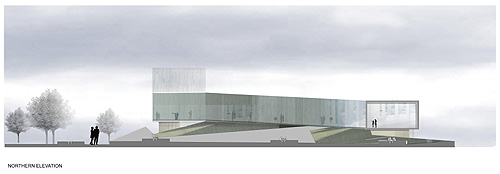| Home / World Expo 2010 Shanghai | Tools: Save | Print | E-mail | Comment |
| Ireland Pavilion |
| Adjust font size: |
|
The theme of the Ireland Pavilion is the "Art of Life." Irish culture originates from the Celtic culture. The Celtic people refer to those ancient people living in the central Europe with common cultures, languages and strong affinities among each other. At present, only the Scottish, Welsh and the Irish are still proud of their Celtic heritage. The Celtic people are tall, strong, bellicose, and it could be said that their culture is brimming with eulogies for heroes. The Celtic people are also quite religious, with their music exhibiting graceful, sorrowful and mysterious elements. These elements are fully reflected in the design and exhibition of the Irish Pavilion. The Irish Pavilion consists of three exhibition areas, with the central one being used to exhibit the unique Celtic art and cultural heritage through the stage and the quasi-circle large screen, introducing the Irish people and their wisdom of coexistance with nature to visitors. In the middle of the Pavilion there is a round hall, where the Irish stone crosses are lined up. The round hall also has many doors facing different directions, connecting the hall to the entrance, picture area, and the film and video room. The space design of the pavilion features a proper balance between closed and open, reflecting a significant degree of freedom and elasticity in the design.
The principal feature of the pavilion is an exhibit of six of the "High Crosses of Ireland." Ireland boasts many of the famous large monasteries in Europe, which resembles villages, centering upon cemeteries and chapels. The most eye-catching objects in Irish churches are those stone crosses, and it has been a local custom to erect crosses in cemeteries or churches. The crosses were all made out of stones, replacing the original wooden structure. The skills of carving and engraving on stone slates and crosses were well developed, which represents the Golden Age of the Irish culture, and now stone crosses are found everywhere in the countryside, making it a unique art of life. The six stone crosses on display at the Aichi World Expo, which were commissioned by the National Museum of Ireland a hundred years ago, have become part of the Irish culture heritage. The 2005 Aichi World Expo will be the first time any of them have been exhibited out of the Ireland. Towering up to seven meters tall in the nine-meter-high exhibition hall, these stone crosses create a powerful, grand and sacred impression, dwarfing the surrounding visitors. The lay-out of these exhibits is in line with the Irish traditions. The replicas are displayed under an illustrated dome, and the constantly changing light and color of the air define the Irish landscape. These beautiful features together with the sound of the Irish countryside are presented in the pavilion's exhibit, prompting visitors to envisage of a vast, mysterious and imaginative space.
The stone carving and engraving, together with the surrounding pictures and exhibits, symbolize the development of Christianity and the culture of stone carving initiated by monks in the fifteenth century. The geometrical pictures in the stone works are said to be derived from inspirations of the sun and nature, reflecting people's homage, gratitude, and worship of the nature and the almighty God. The art of stone carving and engraving embodies the interpretation of the 'wisdom of the nature' provided by the Irish Pavilion, and it also tells us the wisdom of the Celtic people to coexist with nature in harmony. A circle of giant sofas are prepared for the audience in the small film and video room of the Irish Pavilion, and visitors can rest on the bed, enjoying the programs being displayed on the suspended screen in the ceiling. These special designs enable visitors to understand the Ireland out of curiosity and in a leisured mood.
(www.expo2010china.com) |
| Tools: Save | Print | E-mail |
| Comment |



